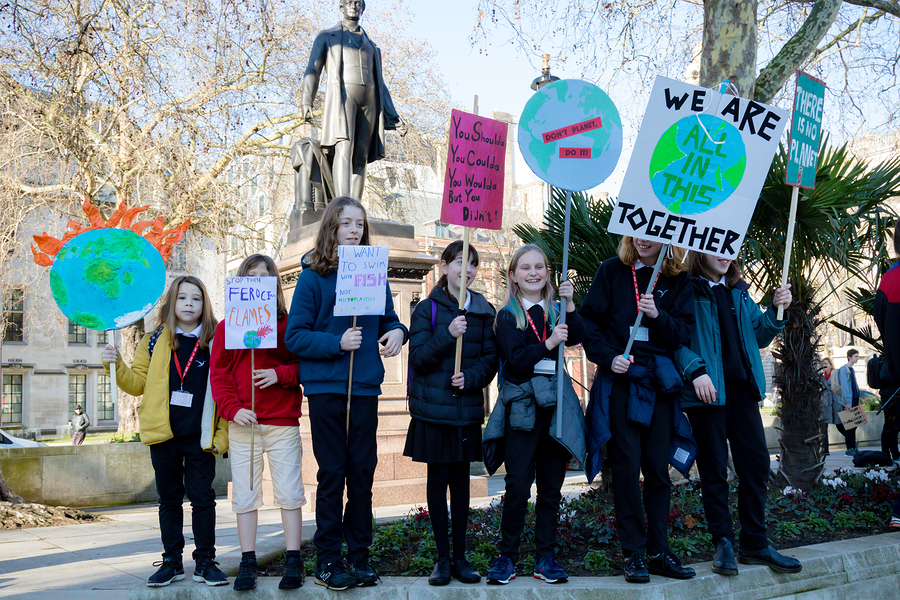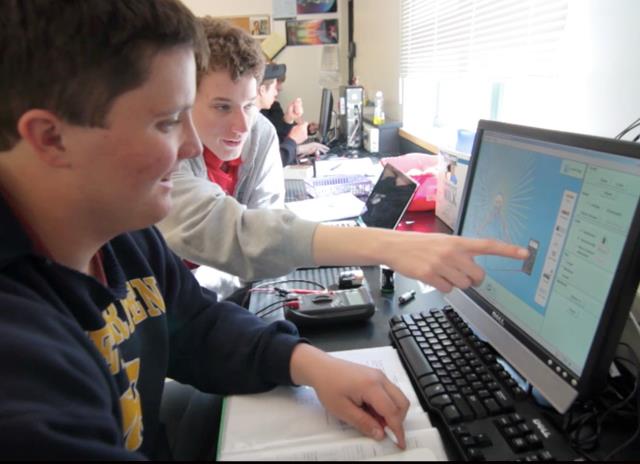Climate change is making younger generations demand actions; still, schools are not including this subject in their curriculum.
Photo: Bigstock
On October 2018, the Intergovernmental Panel on Climate Change released a report about the impacts of global warming, especially if temperatures rise above 2.7ºF (or 1.5ºC) by 2100. Still, projections show we’re likely to pass it as early as 2030.
So, what’s the big issue?
Higher temperatures mean the oceans are getting hotter which makes Greenland’s ice melts six times faster than in 1980 which cause the sea-level to rise, affecting coastal economies. On the other hand, dry regions are more likely to experience drought, heat waves, fires, or intense hurricanes —all of this resulting in vast migrations of people and mass extinctions of animals.
A study by the Pew Research Center showed that 81% of millennials believe the Earth is getting warmer, and that 65% of them say human activity is the primary cause. Compared to the general public, that’s about 10% more.
Noticing how the environmental crisis is endangering everyone’s future, particularly their own, the younger generations are taking a stand.
Greta Thunberg and the younger generations
Thunberg, a 16-year-old Swedish girl, founded the #FridaysForFuture, a movement that started after she decided last August to skip school every Friday and stand outside the Parliament as a protest against the lack of adequate climate legislation by the government.
Following her example, on March 15, millions of people, 1.6 million to be exact, walked out of their Friday classes in more than 125 countries to strike on the lack of actions against climate change.
In their website, Fridays for Future explains: “School children are required to attend school but, with the worsening Climate Destruction, this goal of going to school begins to be pointless. Why study for a future, which may not be there? Why spend a lot of effort to become educated, when our governments are not listening to the educated?”
How can education in itself help in this crisis? By teaching.
Teaching Climate Change
For teachers to help younger generations fight against climate change, they need to start teaching about it. By doing so, not only will they create awareness about the situation but also help them create soft skills like critical thinking and analysis of information.
In a recent poll to 505 American teachers, 74% of them support teaching about climate change, but only 42% said they actually do it. The top reason they gave about not covering climate change was that it wasn’t related to the subjects they teach so, what can they do in this case?
A great way to include climate change in any class is by showing a movie. Although it may sound obvious, watching the effects of climate change can make students understand better what is happening. Common sense media even has a list of movies that can help all ages.
Another way is assigning a novel. There are many good novels in the subgenre of science fiction known as “cli-fi” (climate fiction) that can help students and teachers understand better climate change. The website Dragonfly.eco offers different books for any age in eco-fiction.
There is also something known as “citizen science,” that means amateur people participation in scientific research. Pages like Scistater offers many different projects that teachers and students can volunteer at it and learn about data collection and help the environment.
Assigning a research project, multimedia presentation or speech is another way to introduce climate change into any topic only by merely shaping the problem around the use of plastic, migration, natural disasters or any environmental issue.
Another idea to include the topic to students is merely talking about your personal experience, especially when it comes to change in the seasons, especially in winter, demonstrating the impact the warmer weather has had in their community.
Take advantage of what’s out there! There are a lot of different resources that teachers can use; here are some examples:
-
Google offers free sustainability lesson plans for grades 5-8.
-
Biointeractive has free education resources on education and the environment.
-
Global Oneness Project gives lesson plans with movies that show the impact of climate change around the world.
-
The National Center for Science Education offers free climate change lessons and has a program called “Scientist in the classroom” that connects scientists with teachers so they can work together.
-
Ripple Effect creates a STEM curriculum about real people and places that have been affected by climate change for K-6.
Students are already interested in environmental issues, so much so that they are willing to skip school to fight for climate change. By teachers showing more interest in the topic and helping them have a better understanding about it, not only will help them engage in class but also fight misinformation, develop soft skills and give them the tools they need to create a better future.
This article from Observatory of the Institute for the Future of Education may be shared under the terms of the license CC BY-NC-SA 4.0 
)
)





)
Paulette Delgado
Paulette Delgado
Paulette Delgado